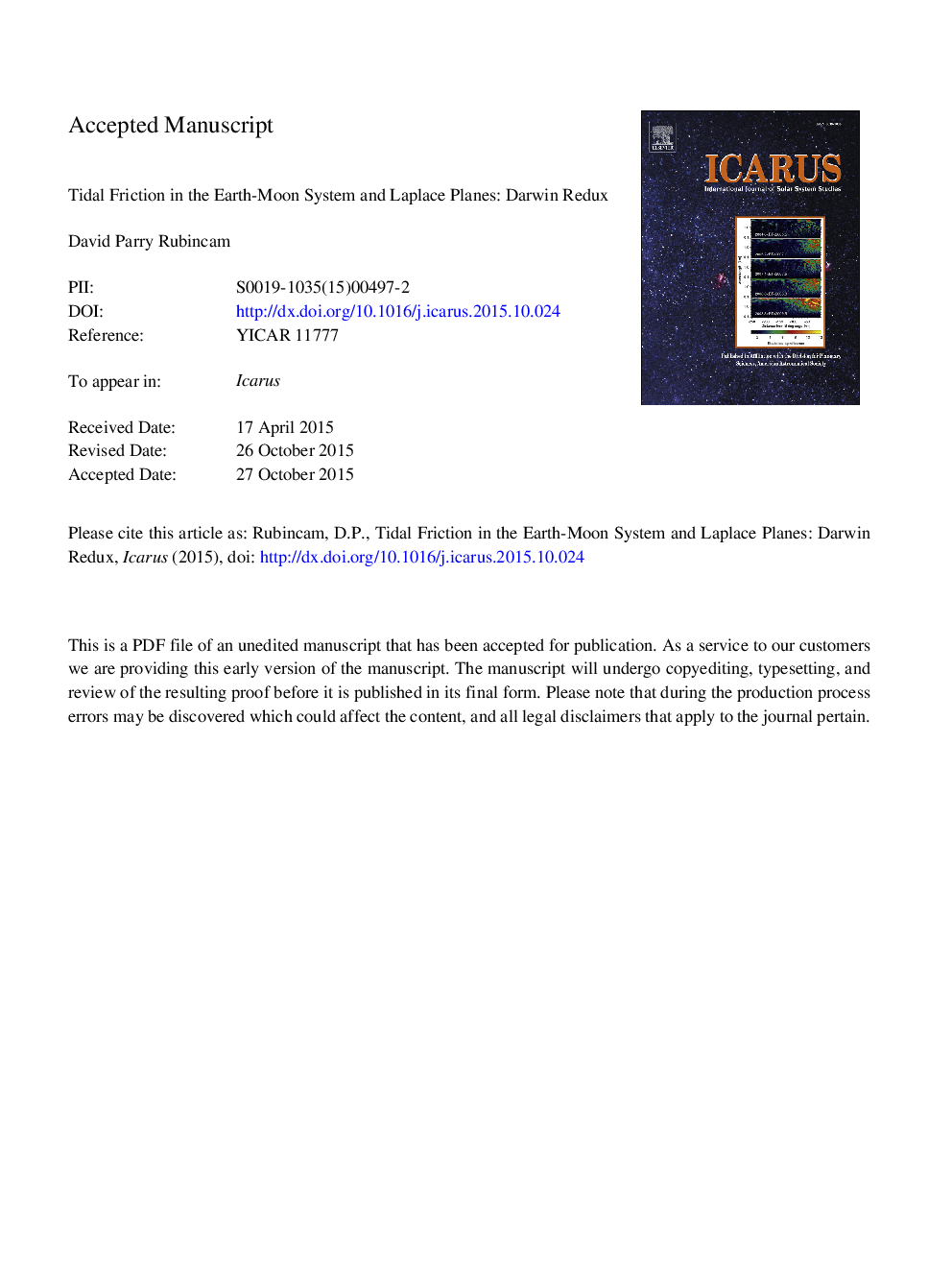| Article ID | Journal | Published Year | Pages | File Type |
|---|---|---|---|---|
| 8135665 | Icarus | 2016 | 91 Pages |
Abstract
The dynamical evolution of the Earth-Moon system due to tidal friction is treated here. George H. Darwin used Laplace planes (also called proper planes) in his study of tidal evolution. The Laplace plane approach is adapted here to the formalisms of W.M. Kaula and P. Goldreich. Like Darwin, the approach assumes a three-body problem: Earth, Moon, and Sun, where the Moon and Sun are point-masses. The tidal potential is written in terms of the Laplace plane angles. The resulting secular equations of motion can be easily integrated numerically assuming the Moon is in a circular orbit about the Earth and the Earth is in a circular orbit about the Sun. For Earth-Moon distances greater than â¼10 Earth radii, the Earth's approximate tidal response can be characterized with a single parameter, which is a ratio: a Love number times the sine of a lag angle divided by another such product. For low parameter values it can be shown that Darwin's low-viscosity molten Earth, M. Ross's and G. Schubert's model of an Earth near melting, and Goldreich's equal tidal lag angles must all give similar histories. For higher parameter values, as perhaps has been the case at times with the ocean tides, the Earth's obliquity may have decreased slightly instead of increased once the Moon's orbit evolved further than 50 Earth radii from the Earth, with possible implications for climate. This is contrast to the other tidal friction models mentioned, which have the obliquity always increasing with time. As for the Moon, its orbit is presently tilted to its Laplace plane by 5.2°. The equations do not allow the Moon to evolve out of its Laplace plane by tidal friction alone, so that if it was originally in its Laplace plane, the tilt arose with the addition of other mechanisms, such as resonance passages.
Related Topics
Physical Sciences and Engineering
Earth and Planetary Sciences
Space and Planetary Science
Authors
David Parry Rubincam,
